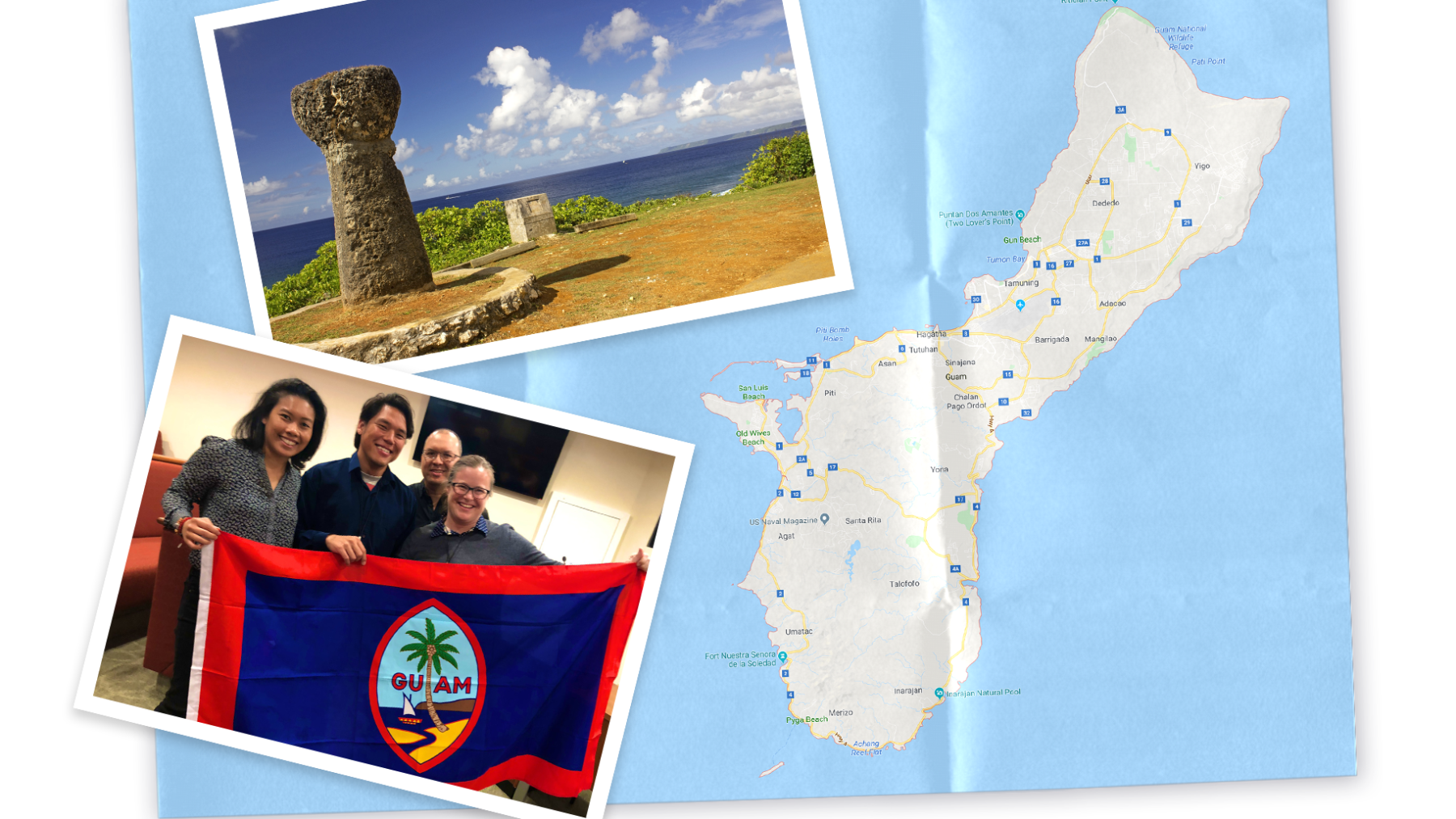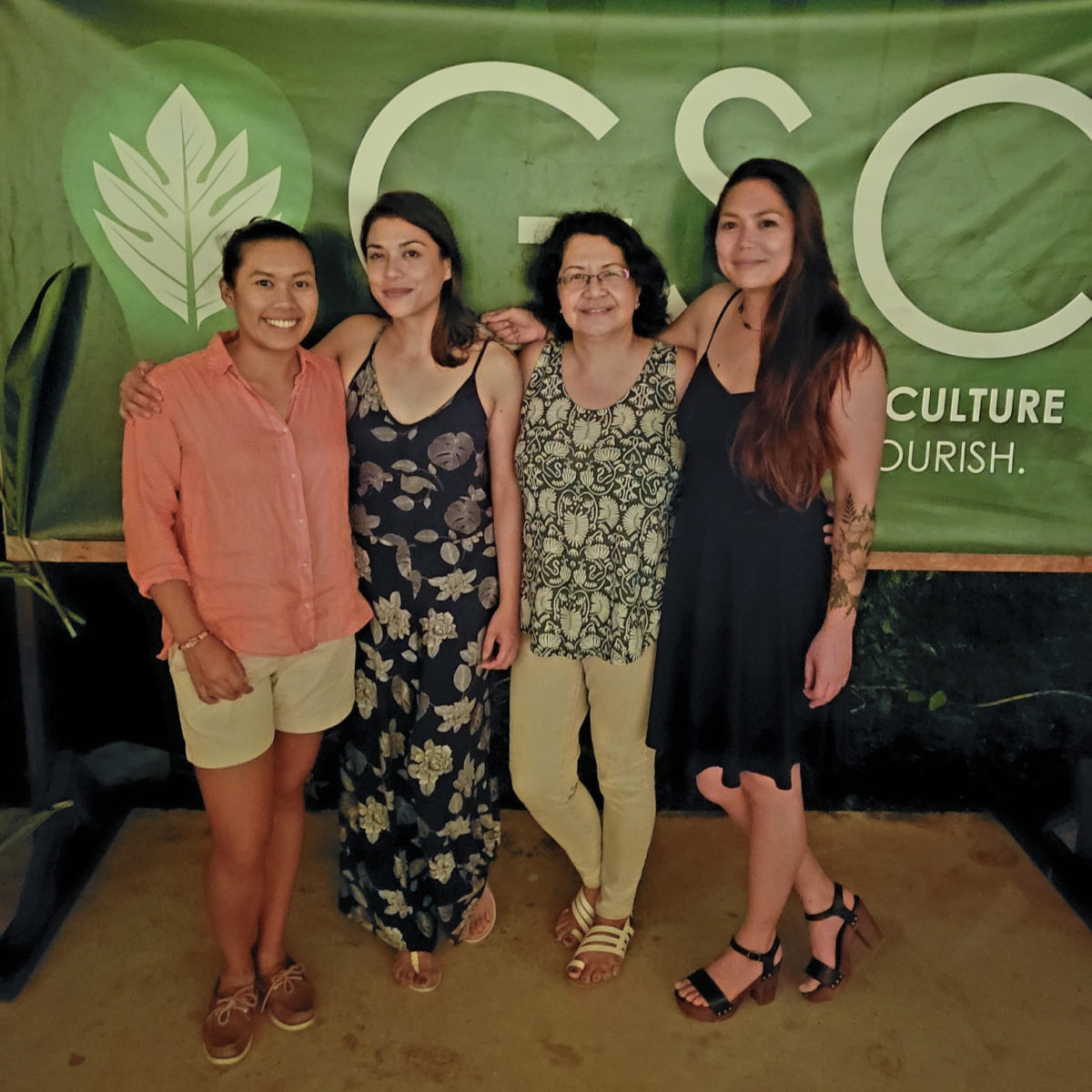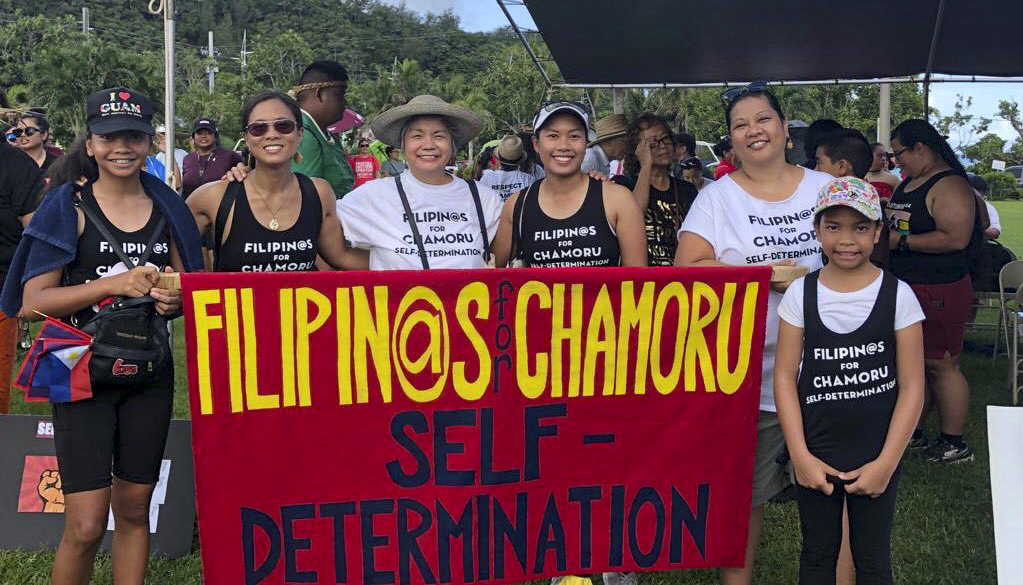
Born and raised on the pacific island of Guam, Harvard graduate student Kristin Oberiano wants to write a history of the island that is inclusive of all its people.
Photos courtesy of Kristin Oberiano and from iStock
Where the new day begins
“Guam is more than just a military base. It is filled with people who are rarely written [about] in the U.S. history textbooks.”
Like many fifth graders in American elementary schools, Kristin Oberiano took U.S. history. But what she learned in the classroom about the history of Guam, the small Pacific Island near the Philippines where she was born and raised, didn’t match her experience growing up there.
“I would flip to the [textbook’s] index, look for Guam, and if it was in there, it would be one entry about World War II, and how the United States freed Guam and then found its way to go capture the Philippines or some other islands in the Pacific,” said Oberiano. “I recognized, I think, from a very early age that this did not reflect the reality that was around me.
“Guam is more than just a military base. It is filled with people who are rarely written [about] in the U.S. history textbooks.”
The desire to write a history of Guam that is inclusive of all those who call it home eventually brought Oberiano to Harvard. Today, she is a graduate student in the history department studying the relationships between the island’s Filipino residents, many of whose forebears immigrated there to work for the U.S. military during World War II, and the CHamorus, the indigenous people of the Mariana Islands who have lived on Guam for more than 4,000 years. The two cultures share an intricate, intertwined history — from the legacies left by colonialism under Spain and the United States to the military presence that continues today.
“I’m looking at specific moments in the 20th century where Filipinos and CHamorus have interacted with each other and how these moments are emblematic of the tensions but also the solidarity between the two groups,” said Oberiano. “They were colonial siblings, essentially. During the Spanish era, Guam was under the purview of the Spanish government through the Philippine colonial state. But when the Americans came in, the Philippines and Guam were considered separate political entities, and the connections that had formed between the CHamorus and the Filipinos in the Spanish era were contested and severed.”


Oberiano (left) with the main board of directors for Guåhan Sustainable Culture — a new nonprofit aimed at making the island more sustainable by increasing food security — and marching with Filipin@s for CHamoru Self-Determination during the Fanoghe March.
Photos courtesy of Kristin Oberiano
While Oberiano hopes to one day share the history she has uncovered, as a professor specializing in this area, she is quick to point out that the legacy these relationships left behind carry personal implications for the present, such as exploring what it means to be a settler on indigenous lands, even if generations of your family have been born and raised there.
“What [the word] ‘settler’ helped me to recognize is that my family has roots in another place in the world, and that the place that I am currently living in and call home is ultimately the land of the CHamoru people,” said Oberiano. “It allows me to recognize my responsibilities and what I owe to the people of Guam, and to the land itself.
“It doesn’t mean forgetting the sacrifices of my Filipino grandparents, but it acknowledges that all of these identities flow together. They’re all part of the historical injustices and inequalities that have existed for both peoples.”
As residents of an unincorporated territory of the United States, the people of Guam are American citizens but cannot vote in U.S. elections and have limited representation in Congress. The island’s status as a territory, and who has the right to determine whether it should remain one, is a concern for residents.
“It’s not correct of me, at least in my opinion, to come in and say, ‘Hey, I’m going to vote for a particular status,’ because that’s the right of the CHamoru people,” said Oberiano. “But there are different ways in which I believe Filipinos and other non-CHamorus who call Guam home can participate in that self-determination struggle without taking [up] too much room.”
She and her family put that belief into practice earlier this year by creating Guåhan Sustainable Culture, a nonprofit that shares knowledge about sustainable gardening techniques. Over the last year, the group has run a series of workshops, from training attendees to use aquaponic and hydroponic systems to growing microgreens.
“By trying to reclaim the traditional practices of farming and agriculture, I think Filipinos who call Guam home can help make it more self-sufficient, self-reliant, and depend less on colonial imports or imports from the states. We can really help to make Guam a more robust and livable island.”
This story is part of the To Serve Better series, exploring connections between Harvard and neighborhoods across the United States.





